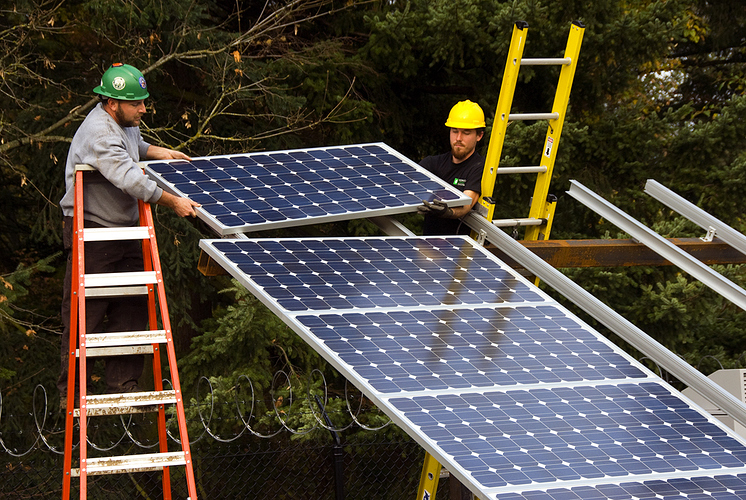At Public Books, Daniel Aldana Cohen debunks a number of misconceptions about the environmental value of urban density, as found in cities like New York and Tokyo. While many environmentalists argue that battling climate change will require that most of our cities start to look more like Manhattan, Cohen demonstrates that when indirect carbon emissions are taken into account, wealthy urban centers turn out to be some of the biggest polluters. He suggests that the model we should follow instead is working-class neighborhoods:
Yes, urban density is key to lowering carbon emissions. But following the carbon tells a different story about urban climate virtue. The best example of urban sustainability isn’t Manhattan or San Francisco, it’s working- and middle-class neighborhoods with row houses and apartment buildings like much of Brooklyn or South Philadelphia: neighborhoods with good access to public transit, local jobs, and public services, with residents who consume far less than Manhattan’s rich.
These democratic neighborhoods accidentally became the country’s most climate-friendly because for decades, unions, community groups, and motivated citizens fought hard to get parks, libraries, sports facilities (even handball and basketball courts), theaters, decent schools, and other low-carbon public amenities installed. These amenities are what foster all the benefits of social connectedness and community; they allow the exchange of meanings to matter more than the exchange of goods, even while basic needs are met by quality public institutions. (To be clear, it’s not because the poor consume so little; they should consume more. The affluent must consume much less.) What made these communities live was being anchored by dense housing that residents could afford thanks to public policy. As the urbanist Mike Davis argues, “the cornerstone of the low-carbon city, far more than any particular green design or technology, is the priority given to public affluence over private wealth.”
Now, this model of low-carbon urbanism is being threatened by gentrification and displacement. This can shred communities’ public life, strip away affordable housing, and—because it often comes with nicer parks and bike lines—mingle the stories of urban greening and low-carbon urbanism. Gentrification is a huge threat to the low-carbon urban fabric we already have. Now more than ever, urban progressives must cement the alliance between social justice and environmental improvement by vigorously defending affordable housing in dense neighborhoods.
Image: Workers install solar panels along a “solar highway” in Oregon, 2008. Via Public Books.
